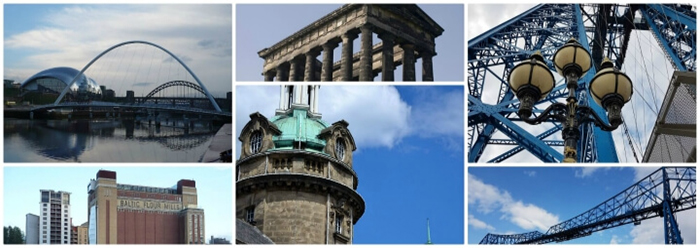
‘Geordie’? ‘Mackem’? ‘Smoggie’?: Dialect Differences in the North East of England (GMS)
Funded by the Leverhulme Trust (through their partnership with the British Academy)
(SRG1819\191203)
July 2019 – June 2021
Overview
Project overview
The North East of England is a highly distinctive dialect area in the UK. One of its most famous dialects is ‘Geordie’, which is associated with Newcastle upon Tyne and its surrounding areas. Though this term is also used for people from Tyneside, outsiders to the region may incorrectly apply the ‘Geordie’ label to the North East as a whole, which in part reflects the gravitational pull of Newcastle within the region and beyond (Beal 1999: 35). However, there are distinct local identities within the North East – other places eschew the ‘Geordie’ label and instead use their own nicknames for local people and their dialects, such as ‘Mackem’ (Sunderland) and ‘Smoggie’ (Middlesbrough).
Our project aims to investigate whether linguistic variation and change patterns consistently across geographical space within a single region, focusing on the North East of England. Taking a comparative sociolinguistic approach, we compare the use of lexical, grammatical and discourse-pragmatic features in Newcastle, Sunderland and Middlesbrough, to ascertain the relative balance of linguistic diffusion (the spread of innovative features from an influential urban centre) and levelling (the loss of more traditional, localised features in favour of supralocal forms) within the area.
The project has three key objectives:
- To ascertain the extent to which trends in language use within the North East of England correlate with perceived dialect differences, and consider reasons why these may diverge;
- To track linguistic changes in progress over time and geographical space, to identify possible dialect continua;
- To consider how the different socio-historical backgrounds of Newcastle, Sunderland and Middlesbrough might have influenced the modern-day patterns of variation.
Our primary data comprises spontaneous speech from people in the North East, originally recorded for the ESRC-funded project ‘The Use and Utility of Localised Speech Forms in Determining Identity’ (TUULS, Llamas et al. 2016-19). While TUULS focused on accent variation, the current project focuses on dialect. Our analyses will compare how North East dialect features, such as plural yous and pronoun exchange, are used and perceived, drawing upon the speech data alongside perception data from a dialect questionnaire. The analysis involves quantification of these dialect forms in variation with semantically equivalent alternatives, to examine their patterning according to location, sex, age, and relevant linguistic factors. This will provide a new, much-needed account of dialect differences within the North East and how these might have arisen historically, as well as offering unique insights into how diffusion and levelling proceed across space.
Banner image compiled from photos of: Newcastle Quayside by Claire Childs | "Penshaw 2" by Jax60 licensed under CC BY-NC-ND 2.0 | "The Empire Theatre and The Dun Cow Pub" by El Bingle licensed under CC BY-NC 2.0 | Middlesbrough Transporter Bridge by Carmen Llamas
